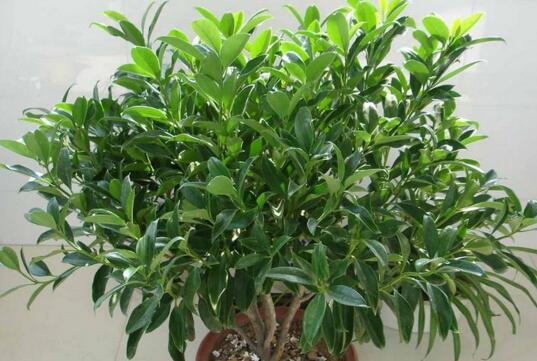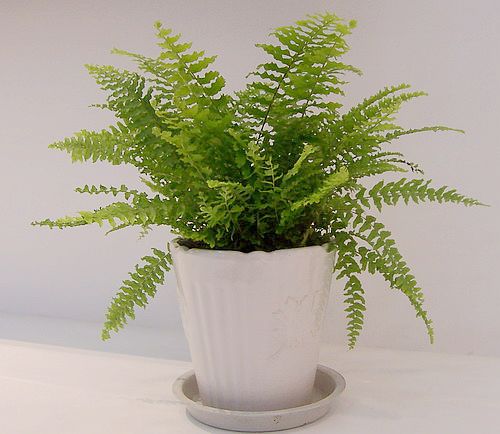Culture methods of ash (ash wood, African jasmine)
Ash (ash, African jasmine)
Scientific name: fagraea ceilanica
Morphological features: evergreen (climbing) shrub or small Qiao. Leaves opposite, elliptic, apex protruding. Full margin, fleshy, dark green surface. Flowers solitary or cymose Cymes, Corolla funnelform, 5-lobed, white, fragrant.
Ecological habits: like light but avoid strong light, not cold-resistant, like the environment with high air humidity and good ventilation. Resistant to pruning. In the south subtropics, it is green all the year round and grows well. Lax requirements for soil, strong adaptability, rough growth and easy cultivation.
Florescence: from May to October.
Garden uses: large and medium-sized potted plants, courtyard ornamental in South China, indoor potted plants in Central and East China, layout of foyer.
Species identification: a confusing species of the same name-jasminum sambac rhinoceraceae. Both leaves are opposite, and the flowers are white and fragrant. Businesses because the homonym of ash and jasmine is similar to jasmine, but also to facilitate sales, they call it the trade name of "African jasmine".

African jasmine likes warm and humid environment, it likes sunshine, high requirements for air humidity, general cold resistance, suitable for fertile, loose and acidic soil, strong sprouting ability so resistant to pruning, fertilizer and fear of stagnant water. Therefore, when studying how to raise African jasmine, we need to take reasonable measures according to its suitable growth environment.
How to raise African jasmine
First, create an environment conducive to growth
1. What soil does African jasmine like?
African jasmine likes fertile, loose and well-drained acidic soil, so in the cultivation methods and matters needing attention of African jasmine, the soil should be mainly sandy soil. It can be prepared with 7 parts of rotten leaf soil, 1 part of river sand, 1 part of retted organic fertilizer and 1 part of fermented sawdust.
Note: if you are growing in a pot, you need to change the soil every 1-2 years, and you should disinfect the soil when you change the soil; if you are cultivated in the open field, you need to turn the soil once a year, which can ensure good drainage of the soil and increase its air permeability.
2. The suitable temperature of African jasmine
The suitable temperature of African jasmine is 18-32 ℃, so it is a high temperature tolerant plant, but its growth will be inhibited when the temperature is higher than 38 degrees, and when the temperature is lower than 3 degrees, the leaves and shoots may be frozen, so the temperature should be controlled above 3 degrees in winter.
Note: when growing in the open field, pay attention to keep warm in winter, put a double-layer plastic film on the periphery of the plant to keep warm, do not let African jasmine stay below 0 degrees for a long time.
3. Lighting conditions
The primary environment of African jasmine is mainly semi-overcast, so when discussing how to raise African jasmine, the light must not be ignored, and it should be maintained in a semi-shady and ventilated place. When the sun is not strong in spring and autumn, it can be placed in a full light environment, while it should be shaded in summer.
Note: although African jasmine likes the sun, it should avoid the strong direct sunlight in summer. In winter, because the temperature is too low, it will usually be moved back indoors, but do not put it in a dark corner, lack of light will lead to yellow leaves.
4. Humidity requirements
African jasmine likes the environment with high humidity, so in summer, it should spray water to the leaves while watering, and pay attention to the good ventilation of the environment to prevent the air from being too dry to affect its growth.
Note: humidity is often overlooked in African jasmine culture methods and precautions, but if humidity is well controlled, it is beneficial to African jasmine growth, but water spraying should be stopped in winter to avoid low leaf temperature.
II. Methods of African jasmine culture
1. Do a good job of fertilization
During the growing period, thin cake fertilizer and water should be applied once a month, and phosphorus and potassium fertilizer should be applied before flowering; topdressing can be applied 1-2 times in autumn, mainly organic fertilizer. Base fertilizer should be applied at the bottom of the basin when changing pots and planting, and should be stopped in winter.
Note: although phosphorus and potassium fertilizer can promote the flowering of African jasmine, it can not be overfertilized once or twice a month. Excessive fertilization will cause leaf thickening and delayed flowering, which should be avoided as far as possible.
2. Watering strategy
The growth of African jasmine needs sufficient water, especially watering during the growing period, which should be watered with moist soil so as not to allow stagnant water around the plant.
Note: winter watering does not need to be too frequent, can make the soil dry, but do not let the soil thoroughly solidify, you can use a stick to check the soil moisture, if too dry should replenish moisture.
3. Regular pruning
African jasmine should be pruned every year in spring, cutting off old branches, diseased branches, too-dense, too-thin, and search-if branches, which can promote the germination of new buds and buds.
The Culture method of African Jasmine Picture appreciation of African Jasmine
African jasmine originated in southern China and Southeast Asia and other countries, formerly known as ash wood. Its aroma is fresh and elegant, which plays a good role in improving the home environment. For friends who love this flower, the cultivation method of African jasmine is a big problem. The following content will be explained in detail! The leaves of African jasmine are thick and green, which can make people feel happy.
Culture methods of African jasmine
English name: African jasmine
Scientific name: Fagraea ceilanica
Alias: Huashi Limu
Culture methods of African jasmine
Section: Loganiaceae of Maqianke
Genus: Fagraea
Land: southern China, Southeast Asia and other countries
Morphological features: evergreen vine, leaves long 15cm, wide ovate, long oval, dark green surface. African jasmine is elegant in shape, each with five petals and a small trumpet-shaped Corolla. Ivory white, waxy, clustered at the top of the flower branches, rich fragrance. The flowering period is very long, blooming in winter and summer, and blooming most brightly in spring and summer. The seed has white silky seed hairs at the top.
Culture methods of African jasmine
Culture methods of African jasmine:
African jasmine likes warmth and good sunshine, but it is required to avoid the strong direct sunlight in summer; it likes the environment with high air humidity and good ventilation, and is not resistant to cold, dry freezing and sharp drop in temperature; it grows best on loose, fertile loam with good drainage; it has strong sprouting and tillering ability, especially resistant to repeated pruning. Flowering in May and fruiting in October-December.
Temperature: African jasmine grows well in a warm climate, and the optimum growth temperature is 18-32 ℃. When the summer temperature is higher than 38 ℃, it will inhibit plant growth; some areas of South China can survive the winter in the open, while pot cultivation in the north of the Yangtze River requires that the greenhouse temperature in winter is not lower than 3-5 ℃.
Lighting: it is best to choose places with side shade in South China; potted plants in the north of the Yangtze River can receive full light in spring and autumn, and avoid direct sunlight before and after noon in summer; pay special attention to the sunny days after a long rain from June to July, and the light is very strong. Shade must be done to prevent tender leaves from being burned. Potted plants are required to have sufficient scattered light and should not be too dark, otherwise it will lead to leaf loss, yellowing or shedding.
Moisture: no matter on the ground or in the pot, sufficient water is required, but the roots must not accumulate water, otherwise they are easy to rot. Watering in spring and autumn to keep the basin soil moist; beware of stagnant water in plum rain season; in hot summer, spray water once in the morning and afternoon to humidify and cool down; for indoor potted plants in winter, it is appropriate to keep the pot soil slightly tide. and spray water to the leaves when the temperature is relatively high around noon.
Soil: planting in the southern region requires a loose, fertile, well-drained sandy loam. Potted plants in the north can be prepared with 7 parts of rotten leaf soil, 1 part of river sand, 1 part of retted organic fertilizer and 1 part of fermented sawdust. During the growing season, the potted plants were loosened once a month to keep their roots in a good state of penetration. In addition, the soil of potted plants can be changed every 1 to 2 years.
Fertilizer: potted plants apply thin mature cake fertilizer and water once a month in the growing season, and phosphorus and potassium fertilizer once before flowering in May to promote plant flowering; after autumn, topdressing phosphate and potassium fertilizer for 1 or 2 times to pass the winter safely. Potted plants in northern China, in order to prevent leaf yellowing, 0.2% ferrous sulfate was added during the growing season.
Culture methods of African jasmine
African jasmine pot
Culture methods of African jasmine
The leaves of African jasmine are thick and the surface is dark green.
Culture methods of African jasmine
The flowers of African jasmine are equally beautiful and worth watching.
Culture methods of African jasmine
African jasmine is an excellent indoor ornamental plant in terms of leaves and flowers. It originated in China, does not need to adapt to the Chinese climate, is very easy to raise. Not to mention how much the volatile gas that regulates hormones is helpful to human health, what are you waiting for? go and raise it.
- Prev

Planting techniques of Hemerocallis
Planting techniques of Hemerocallis
- Next

Maintenance methods of Boston fern (Dryopteris crinkle)
Boston fern (Pteris rugosa) scientific name: nephrolepisexaltatabostoniensis morphological characteristics: small terrestrial or epiphytic fern. Leaves fascicled,-pinnate, slightly pendulous; lobes margin undulate, apex twisted, light green
Related
- Fuxing push coffee new agricultural production and marketing class: lack of small-scale processing plants
- Jujube rice field leisure farm deep ploughing Yilan for five years to create a space for organic food and play
- Nongyu Farm-A trial of organic papaya for brave women with advanced technology
- Four points for attention in the prevention and control of diseases and insect pests of edible fungi
- How to add nutrient solution to Edible Fungi
- Is there any good way to control edible fungus mites?
- Open Inoculation Technology of Edible Fungi
- Is there any clever way to use fertilizer for edible fungus in winter?
- What agents are used to kill the pathogens of edible fungi in the mushroom shed?
- Rapid drying of Edible Fungi

